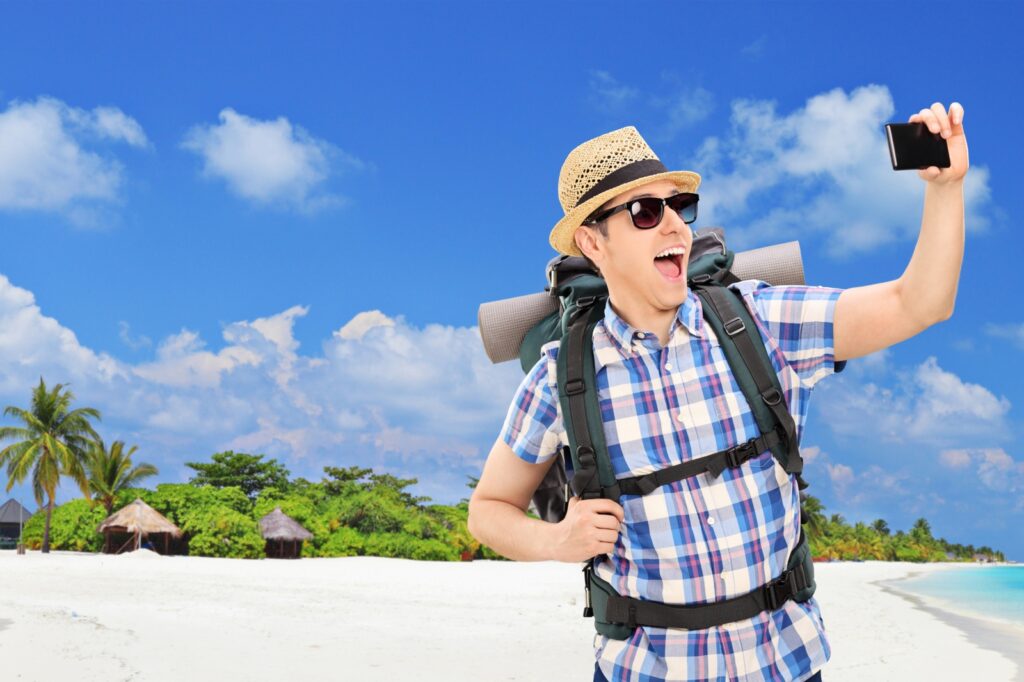
Few things are more exciting than being in a completely new place. Think of your first trip abroad – how great it was to experience the new sights, smells, customs, and language. It’s practically addictive! This week we’re challenging you to do a quick self-assessment. When you vacation, do you look like a “tourist” or a “traveler”? There’s a big difference, actually, so which type of traveler do you think you are? Read on to find out!
First, why should I try to fit in anyway? If you’ve never been outside the U.S., Mexico, or Canada, this is a fair question. After all, you ARE a visitor, so why does it matter what you look like? There are many reasons, actually. Each country has various customs that differ from the U.S., with some being obvious and others being more subtle. A “tourist” lets the world know that they’ve arrived – through dress or actions – limiting themselves to a shallower travel experience, and making them more susceptible to scams and rip-offs. A “traveler”, on the other hand, is more of an observer and is open to the different customs. They’re more likely to be treated better by the locals, raising the chance to meet some new people, and have a deeper connection to the places they visit. So, here are some top tips on what you can do.
Observe local customs. You know the stereotype of an annoying tourist – poorly dressed, loud, pulling out maps in the middle of the street, etc. To avoid being “that guy”, spend a few minutes thinking through what would make you stand out at your destination. For example, a football jersey abroad practically screams tourist. Think carefully before dusting off that Hawaiian shirt or Crocs as well. You get the point. Another thing – before leaving the hotel, pack for your day carefully and sparingly. Carrying around a huge backpack makes you stand out, and you probably don’t want to lug it around all day anyway. Make sure to protect your money and passport, but don’t let possible thieves know where they can find the jackpot by spending excessive time digging through that money belt or fanny pack. Just following common sense rules, like keeping items in your front pockets and being aware of your surroundings will go a long way.
Limit your photos. Photography is a great way to archive and share some of your vacation’s greatest moments. Smart phones are both a blessing and a curse when it comes to photos, though, in part because you have the ability to take limitless pictures. Don’t miss the reality of your vacation by taking photos every second of the day; instead, be more intentional with your photography. Make a plan on the top pictures you want to capture, and when the spontaneous moment strikes for a photo, think of interesting angles and perspectives. Quality over quantity will capture the amazing memories without having to experience your entire vacation through your phone’s screen.
Ask a local where to go. When you disembark for the day on your river cruise, or arrive in a new city via train, it makes sense that nearby businesses will mostly cater to the tourist crowd. Not that this is a bad thing necessarily, but make a point to explore beyond these areas. Talk to locals and see where they eat lunch and shop. Research some places ahead of time and read online reviews and menus. You’ll almost definitely save some money by exploring off the beaten path, and you’ll probably enjoy your day more when surrounded by the locals instead of a ton of tourists. When visiting the locals’ places, just think how you would want to be treated if a person new to your city approached you – people are people and if you treat them with respect you’ll likely get it in return
Lower the volume. As you’ve probably gathered, a major key to being a “traveler” is to avoid being the center of attention. One way to avoid this is to speak a bit quieter than you normally would. It’s customary in many places, including throughout much of Europe, to speak softly when in public. This is less of an expectation in the U.S. Seriously, take note of a European restaurant, or even airport’s volume level compared to an American one! Next, don’t assume that your gestures and body language are the same everywhere. For example, the “okay” and “hook ‘em horns” gestures in the U.S. are highly offensive in many other countries. Just remember, each country has their own customs and unspoken rules, so go with the flow!
Don’t worry too much. All these tips aside, don’t worry too much about how you’re perceived when you travel. The reality is, you ARE a visitor. When you’re in Rome for the first and perhaps only time of your life, there are some must-see sights that you can’t miss. If you’re self-conscious the whole time, you won’t enjoy it. But if you’re cognizant of these tips, you’re likely to have a more authentic vacation.
So, do you tend to look like a traveler or a tourist? If you’re like us, it’s honestly probably a little bit of both. If you ever have a question about local customs or travel tips, we’re here to help! Leave us a note on Facebook or contact us anytime.

 My goal is to simplify travel-planning through an equal exchange process where I acquire your ideas and expectations for your trip relieving you of the worry, hassle, stress and time that accompanies Do-It-Yourself planning.
My goal is to simplify travel-planning through an equal exchange process where I acquire your ideas and expectations for your trip relieving you of the worry, hassle, stress and time that accompanies Do-It-Yourself planning.